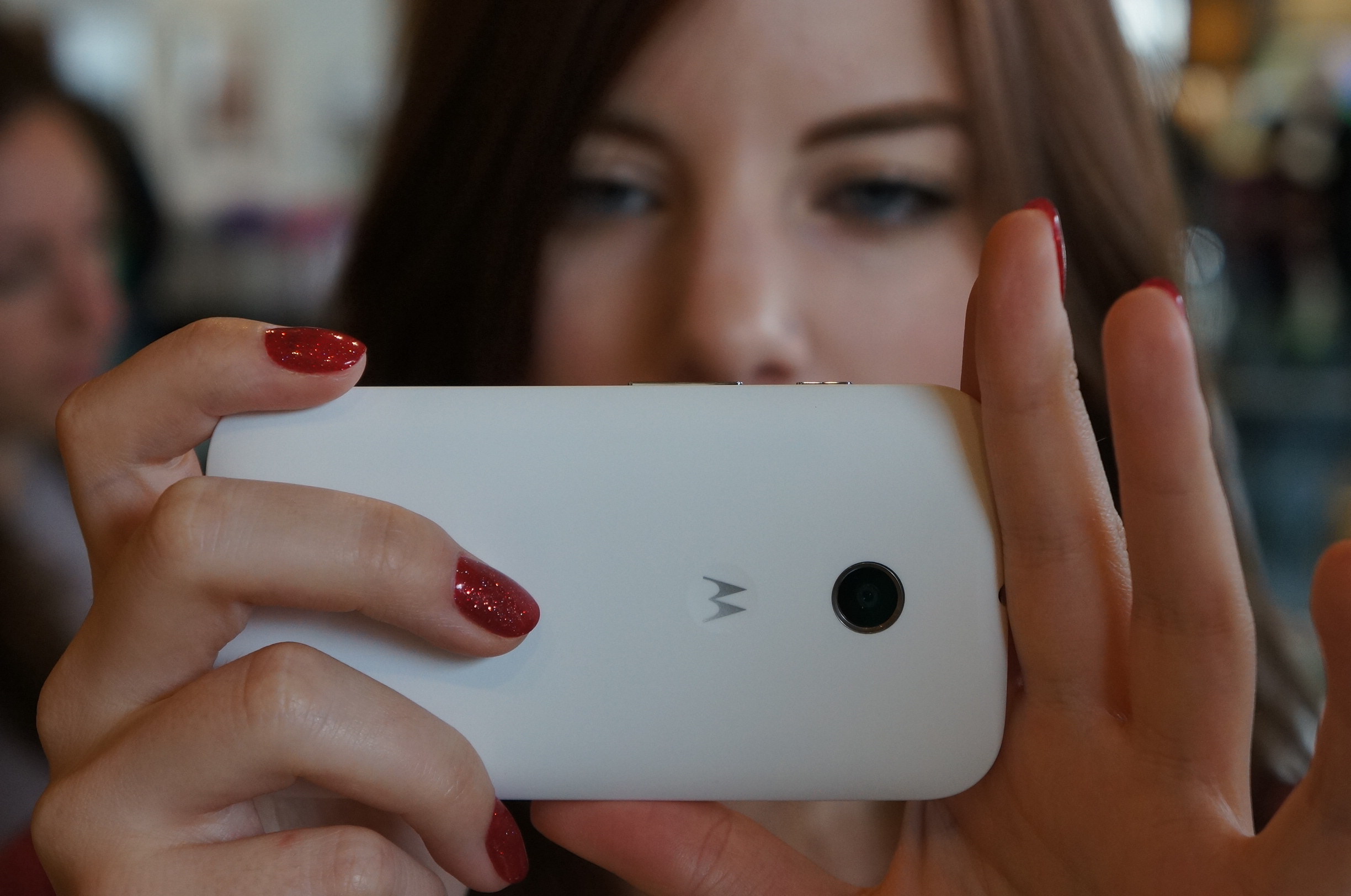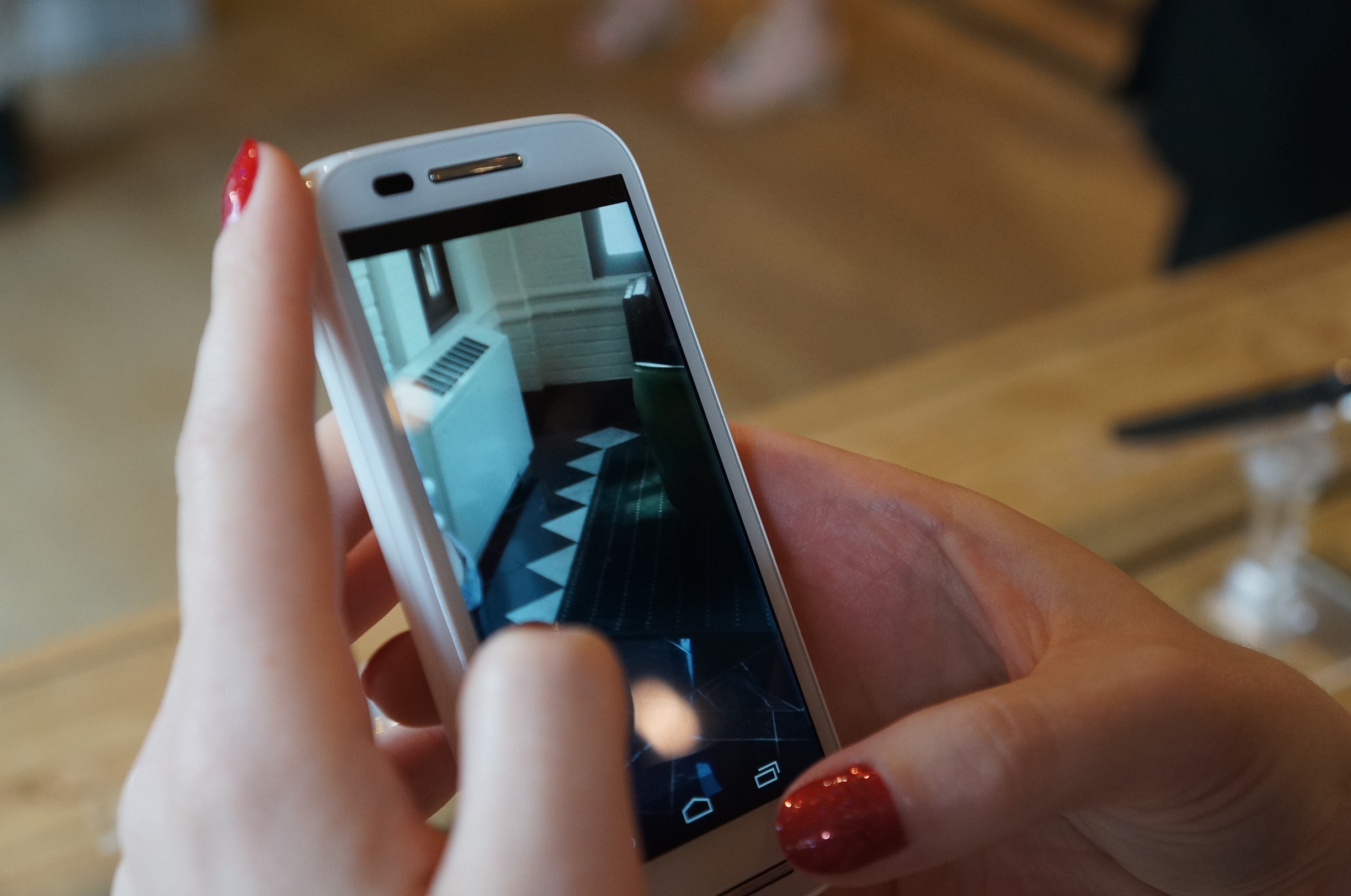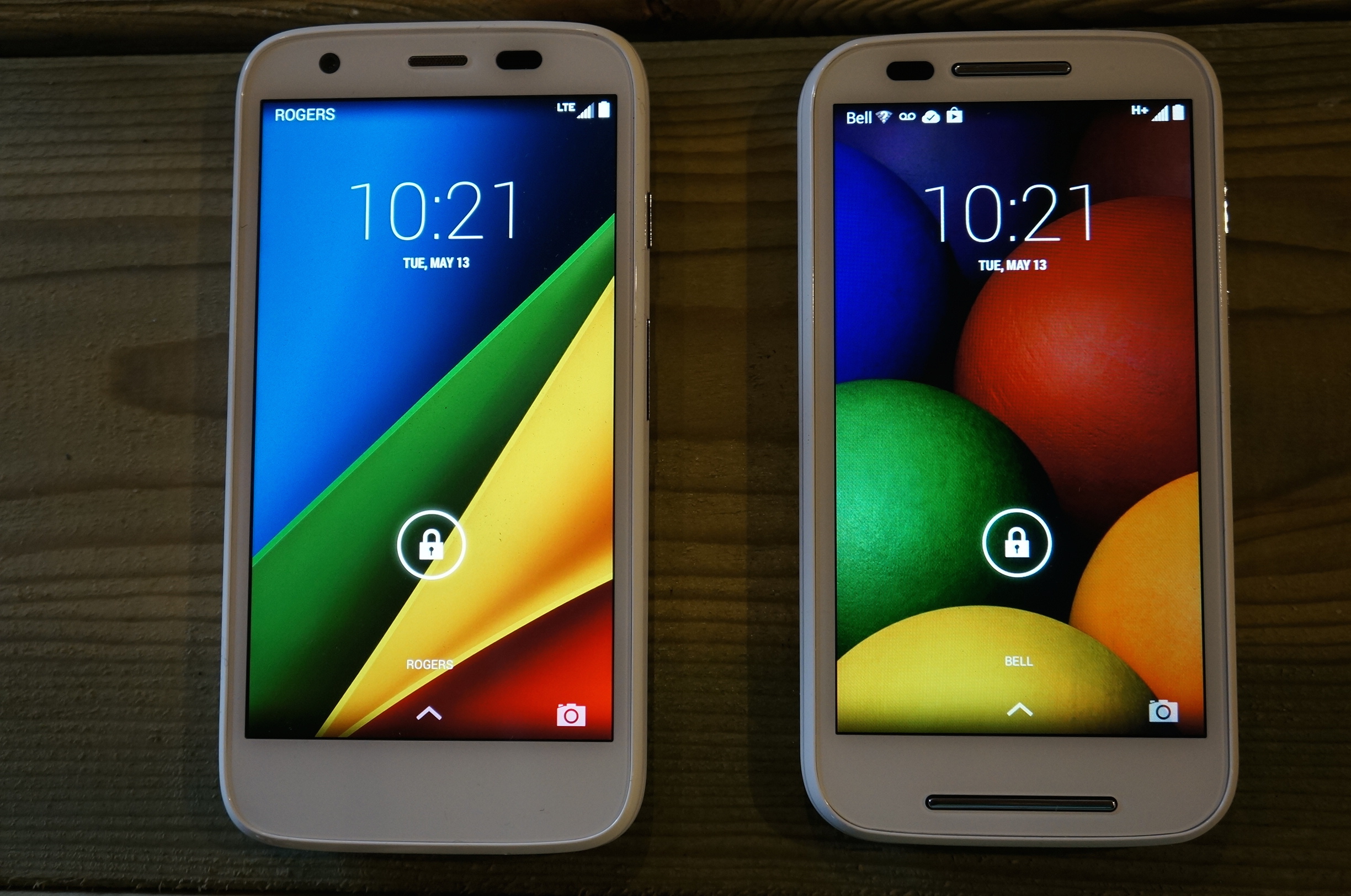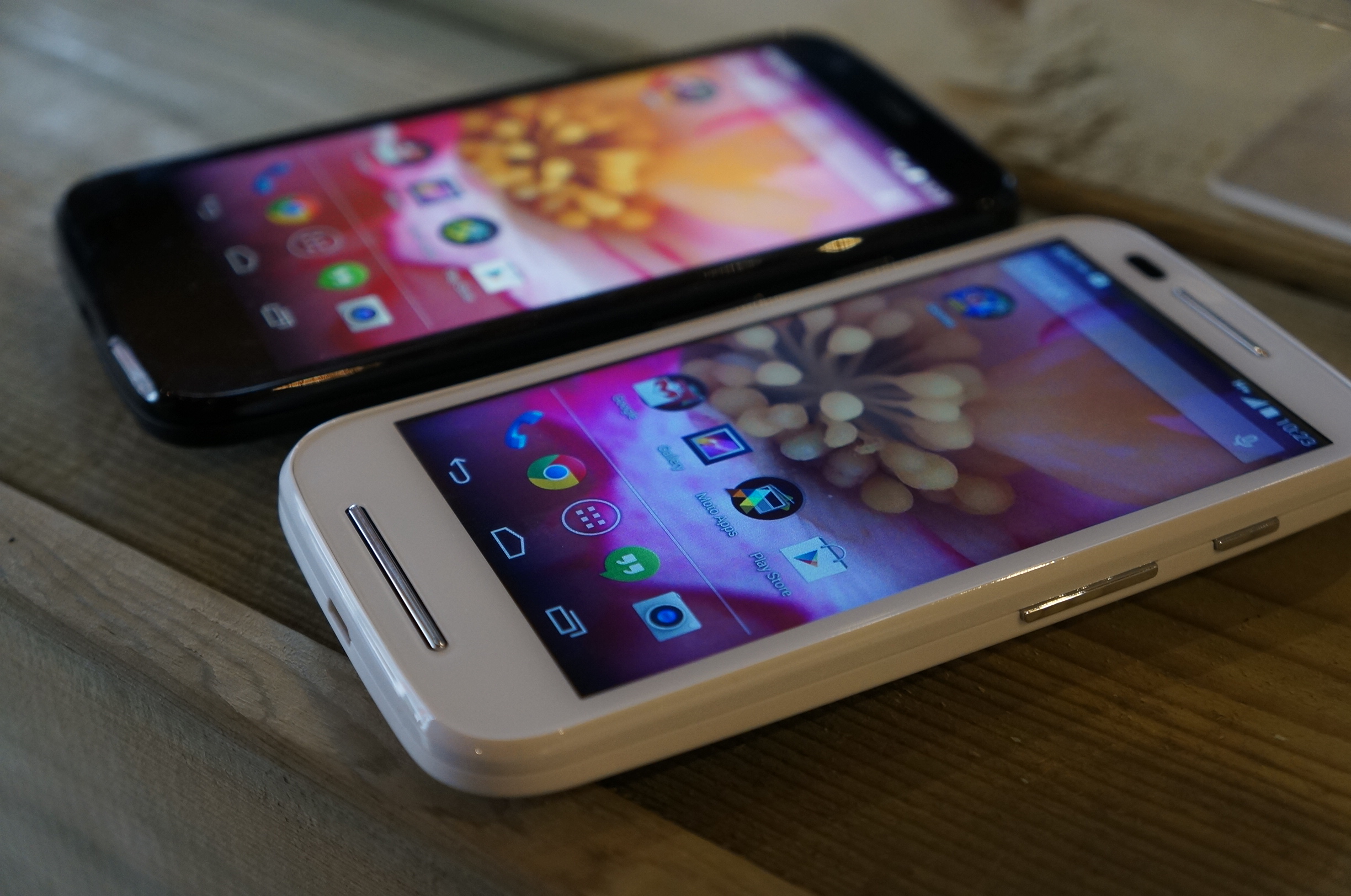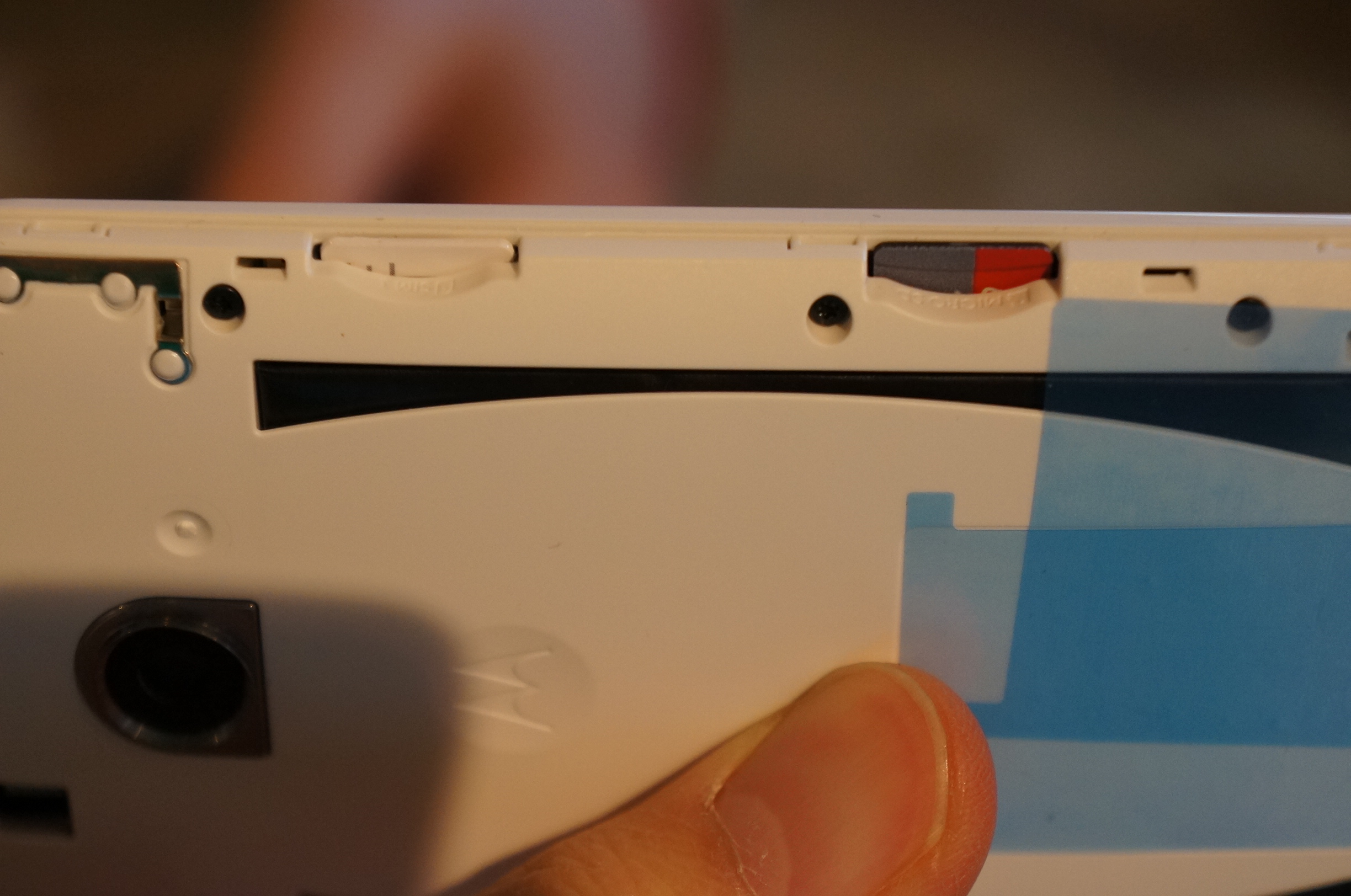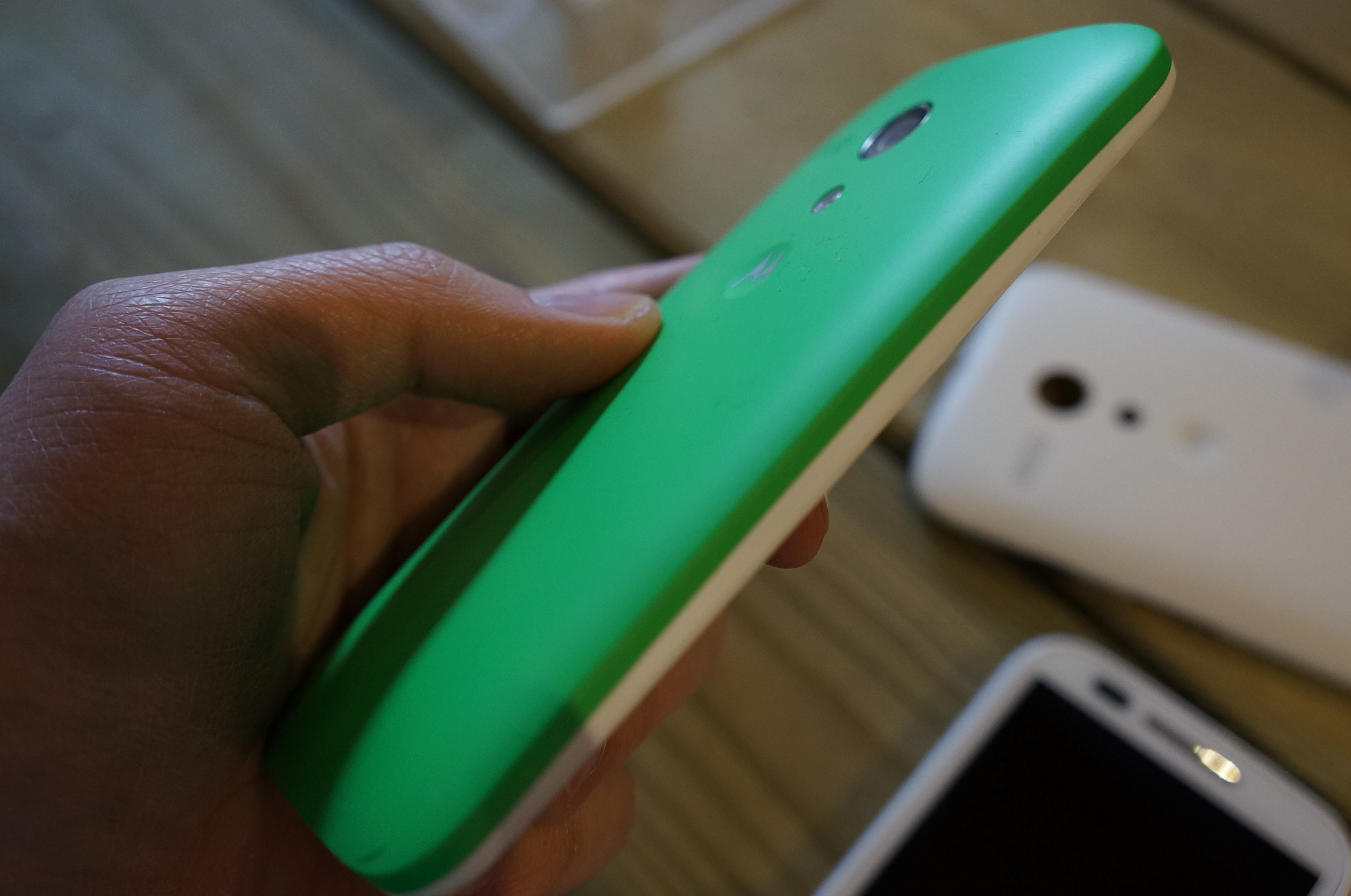Motorola Moto E: Hands-on With Cheapest KitKat Phone
We go hands on with Motorola's newest budget handset.
Motorola has officially announced the Moto E, its latest budget smartphone. The Moto E follows on from the launch of the Moto G last year and is a durable low-cost solution for the masses. Of course, as with the Moto G, the compromise here is specs. You’re not getting a device to rival the Galaxy S5. So what’s under the hood?
The Moto E is based on a Qualcomm Snapdragon 200 and packs a 4.3-inch, 960 x 540 display, and 1 GB of RAM. It’s got a 5-megapixel camera in the back, 4 GB of storage, a MicroSD slot for up to 32 GB of storage, a built-in FM radio, and a 1980 mAh battery. The price is set at $129, which is incredibly cheap. However, when you compare this phone to the $179 Moto G, which boasts a 4.5-inch 720p display (329 ppi), Snapdragon 400 CPU, 1 GB of RAM, a 5-megapixel camera in the back, a 1.3-megapixel lens up front, 8 GB or 16 GB of storage, and a 2070 mAh battery for just $179, the Moto E doesn't seem all that great. We've reached the point where a lot of companies are balancing specs and price instead just going right for the best spec sheet they can put together, but it is a balance, and the Moto E, on paper does seem just a little too low end.
Still, you can't judge a book by its cover, so we went hands on with the Moto E in Toronto this morning. The device is strong and solidly built. It doesn't feel cheap in terms of construction though the display is a little on the small side, especially when you put it side-by-side with the Moto G. It's not of poor quality, but given a small display is one of the hallmarks of a budget smartphone, the size of the phone in your hand does do the device something of a disservice in that regard. It's also not as vibrant as the display on the Moto G when you look at the two side-by-side but that's to be expected.
As with the Moto G, the volume rocker is on the right, underneath the power/sleep button, which might be a bit jarring for users that are used to the more traditional left-side positioning. Luckily, the buttons are far enough apart that you don't (or shouldn't) accidentally press volume up when trying to put the device to sleep, and it does make taking screenshots an awful lot easier (Android uses a simultaneous press of the power button and volume down key to capture). Performance wise, the phone is snappy enough, and can switch apps easily. For Cut the Rope 2, the performance wasn't quite as smooth as the Moto G we had on hand, and the screen wasn't quite as responsive. We could tell that running the WiFi hotspot and Cut the Rope 2 was a little bit taxing, as the phone started to warm up after just a few minutes. Again, no problems with the Moto G in that regard until we started shooting continuous video while operating the WiFi hotspot functionality.
The snap covers were easy to apply but hard to remove. At least two women within earshot asked male attendees to remove the cover, mentioning they didn't want to break a nail taking it off. It shouldn't be too much of a problem, given most people won't change the covers very often, but its worth mentioning. Once you do get the cover off, you'll see that while the battery isn't built in, Motorola is preventing users from replacing it themselves with a plastic barrier that locks the battery in place. Not totally unusual, but it might pain those who enjoy the freedom of being able to buy a new battery should the need arise.
In the short time we spent with the device, we'd say the difference between the Moto E and the Moto G day-to-day performance is enough to warrant spending the extra money on the Moto G if you have it and performance is something you care about. It's a great budget smartphone and it's perfect for those looking to enter the smartphone world for the first time. But, all things considered, the issue is that the price of the Moto G and the price of the Moto E are not far enough apart, especially in Canada where the Moto E costs $179, and the Moto G costs $225. We'd love to see the Moto E priced at $109. That would really seal the deal for us. As it stands, it's a decent phone at a decent price, but we're not wowed like we were when Motorola introduced the Moto G last year. Which would you go for, the $129 Moto E with 4 GB of storage (only 2.2 GB of storage is usable!), or the 8 GB Moto G for $179? Let us know in the comments below!
Follow Jane McEntegart @JaneMcEntegart. Follow us @tomshardware, on Facebook and on Google+.
Get Tom's Hardware's best news and in-depth reviews, straight to your inbox.

Jane McEntegart is a writer, editor, and marketing communications professional with 17 years of experience in the technology industry. She has written about a wide range of technology topics, including smartphones, tablets, and game consoles. Her articles have been published in Tom's Guide, Tom's Hardware, MobileSyrup, and Edge Up.
-
HomeSkillenSlice Looks like Google got GreedyReply
jkjk
Its a pretty decent phone and it is affordable indeed. But the price isnt low enough. Not enough to justify buying it over the Moto G at least anyways. For the people in developing countries where $50 can mean saving for like 4 more months this is going to be a great phone! -
boo radley007 I have a trusty Samsung galaxy appeal that I have had for over two years. Pretty low end with android 2.3. Bottom line it suits my purposes well. A little bigger screen would be nice but I prefer being able to put in in my pocket. I think it only has 2 gig of storage but I have not filled it up yet. It has 512mb of ram which is bare minimum but my app killer app keeps everyone in line. I also like the real slide out keyboard. I wouldn't spend more than $150 for a phone because I am very rough on small electronic devices and would soon go broke replacing iphones or other expensive products. I like the 5mp camera and 1gb ram and the larger screen compared to mine. Also since I use voice search and speech to text often I like that it runs kit kat. I don't watch videos on my phone?!?! so thats not an issue. 3g is ok for me but I am worried that it will be phased out of networks soon. I use straight talk 45/mo unlimited plan.Reply
Bottom line: this is designed for people like me for whom the phone is a tool not a lifestyle. -
HomeSkillenSlice Looks like Google got GreedyReply
jkjk
Its a pretty decent phone and it is affordable indeed. But the price isnt low enough. Not enough to justify buying it over the Moto G at least anyways. For the people in developing countries where $50 can mean saving for like 4 more months this is going to be a great phone! -
HomeSkillenSlice Looks like Google got GreedyReply
jkjk
Its a pretty decent phone and it is affordable indeed. But the price isnt low enough. Not enough to justify buying it over the Moto G at least anyways. For the people in developing countries where $50 can mean saving for like 4 more months this is going to be a great phone! -
hannibal It is Lenovo now and they want to make profit. If there is not Nexus phones any more in the future, we can expect some rice in average price. Fortunately the One is coming, so there still is affordable alternatives!Reply
-
calguyhunk In India, the Moto G 8GB variant costs $209 (the 16GB one costs $225) and the Moto E has been launched at $117. So a $92 differential definitely makes it much more attractive than it is in the US with such a small difference in price.Reply
I'm probably going to get this for my Mom or maybe the ZenFone 5 once it's launched later this month, depending on the price. -
antilycus I don't think people understand how great your phone is without Samsung, Verizon, T-Mobile, etc dumping all their crap on it. The entire MOTO Brand (maybe just the Moto X, which is what I have experience with) is owned by LENOVO now , BTW not Google. Anywho, I've had experience with Samsung G4 and it's slackware is annoying. Just give me pure android anyday.Reply -
shriganesh Moto E has been launched in India for 6999 rupees which translates into $117.6 as per today's rates. Just a little over the magic price of $109. Five of my friends have already ordered it!Reply -
GreaseMonkey_62 While it does sounds like a decent low budget smart phone for once, it would still be worth it to spend a little more and get the Moto G if nothing else for the extra internal storage. Even if you can add a microSD card, apps can't be installed on it with the latest version of Android. A smart phone isn't much to use without apps.Reply
